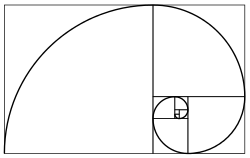1/2 + 1/4 + 1/8 + 1/16 + ⋯


In mathematics, the infinite series 1/2 + 1/4 + 1/8 + 1/16 + · · · is an elementary example of a geometric series that converges absolutely.
There are many expressions that can be shown to be equivalent to the problem, such as the form: 2−1 + 2−2 + 2−3...
Its sum is
Proof
As with any infinite series, the infinite sum
is defined to mean the limit of the sum of the first n terms
as n approaches infinity.
Multiplying sn by 2 reveals a useful relationship:
Subtracting sn from both sides,
As n approaches infinity, sn tends to 1.
History
Zeno’s paradox
This series was used as a representation of many of Zeno's paradoxes, one of which, Achilles and the Tortoise, is shown here.[1] In the paradox, The warrior Achilles was to race against a tortoise. Achilles could run at 10 m/s, while the tortoise only 5. The tortoise, with a 10 meter advantage, Zeno argued, would win. The Achilles would have to move 10 meters to catch up to the tortoise, but by then, the tortoise would already have moved another five meters. Achilles would then have to move 5 meters, where the tortoise would move 2.5 meters, and so on Zeno argued that the tortoise would always remain ahead of Achilles.
The Eye of Horus
The parts of the Eye of Horus were once thought to represent the first six summands of the series.[2]
See also
References
- ↑ Wachsmuth, Bet G. "Description of Zeno's paradoxes". Archived from the original on 2014-12-31. Retrieved 2014-12-29.
- ↑ Stewart, Ian (2009). Professor Stewart's Hoard of Mathematical Treasures. Profile Books. pp. 76–80. ISBN 978 1 84668 292 6.
